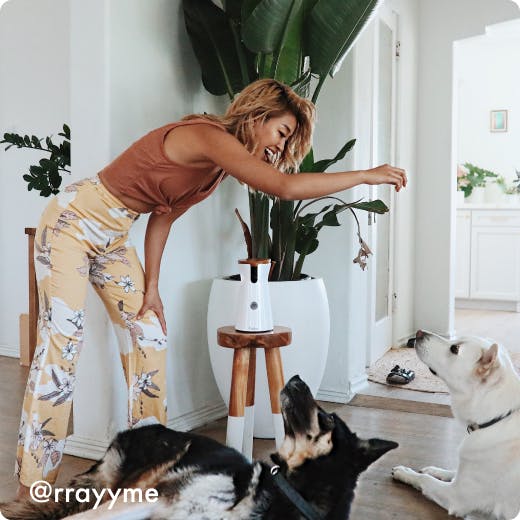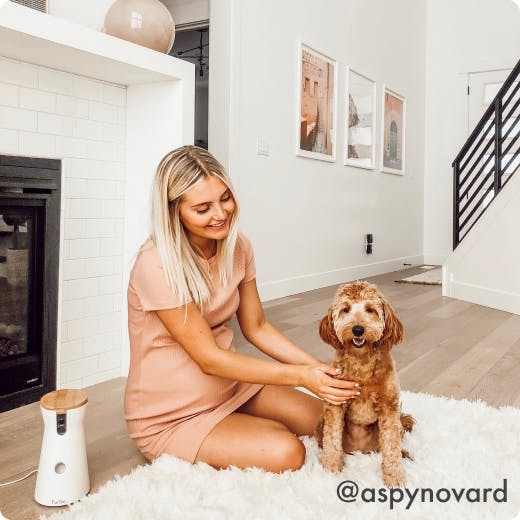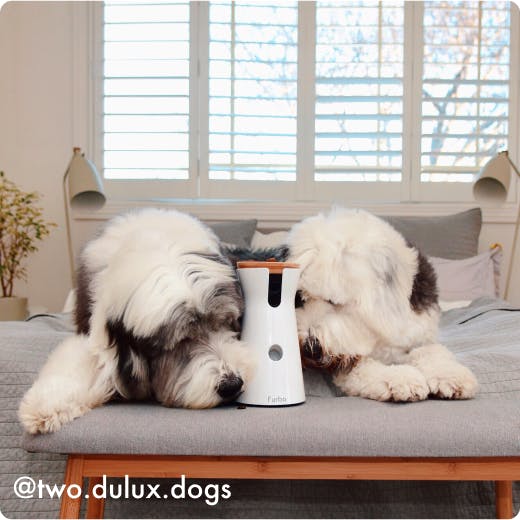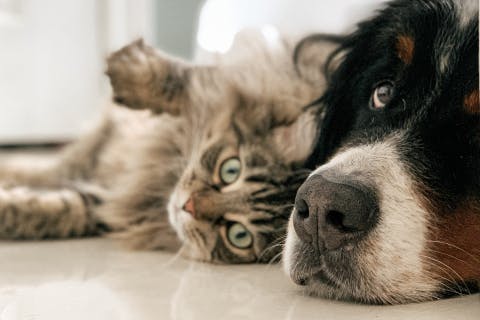
Oh no! You just walked through the door, and you’re greeted by the sight (and smell) of vomit all over the carpet. As you’re cleaning it up, you’re thinking of all the reasons why your pet might have thrown up. Are they sick? Is it something you’ve done? Should you take them to the vet?
In this guide, we’ll tell you everything you need to know about dog and cat vomiting. We’ll show you the different things you should look for and what they might mean, so you can give your furry friend all the care they need.
The Difference between Dog and Cat Vomiting
If you have a house where dogs and cats coexist in peace, you’ll need to know the differences between dog and cat vomiting. This table below can help you identify which of your furbabies has thrown up so you can decide next steps. These are generalizations only, in some instances it may be impossible to tell if it was your cat or dog.
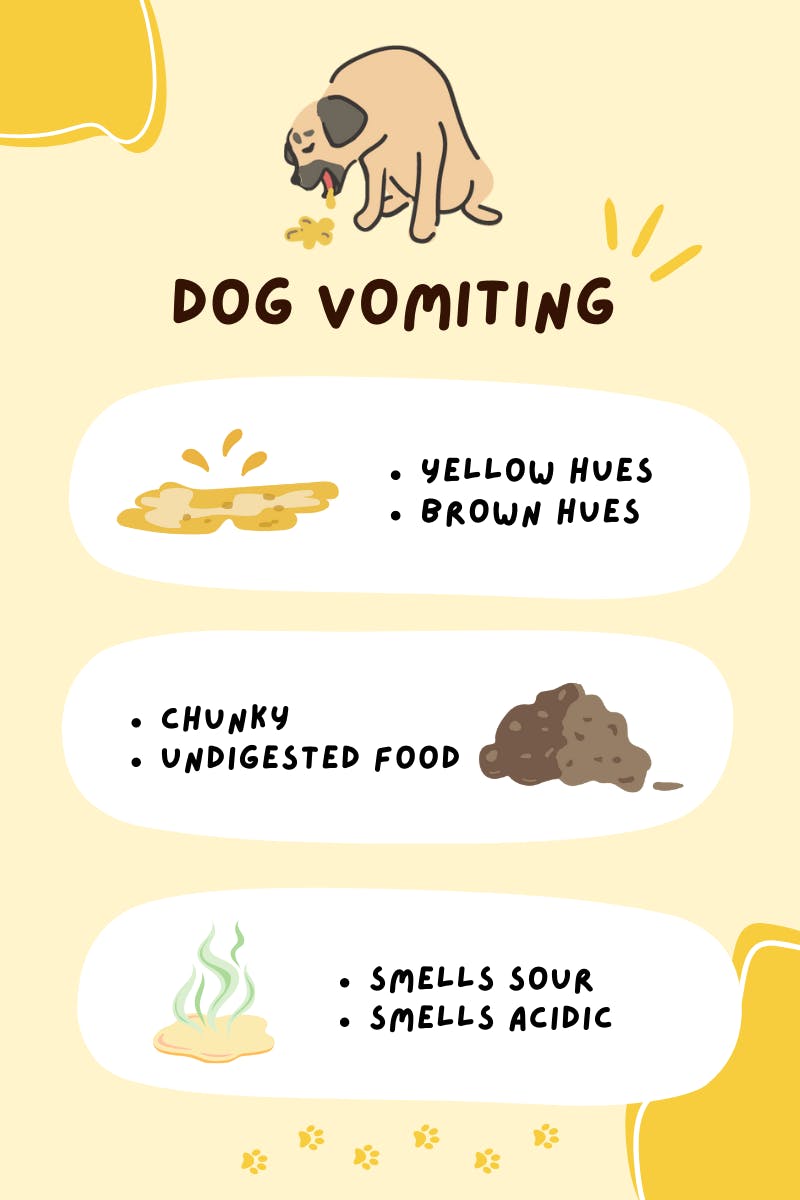
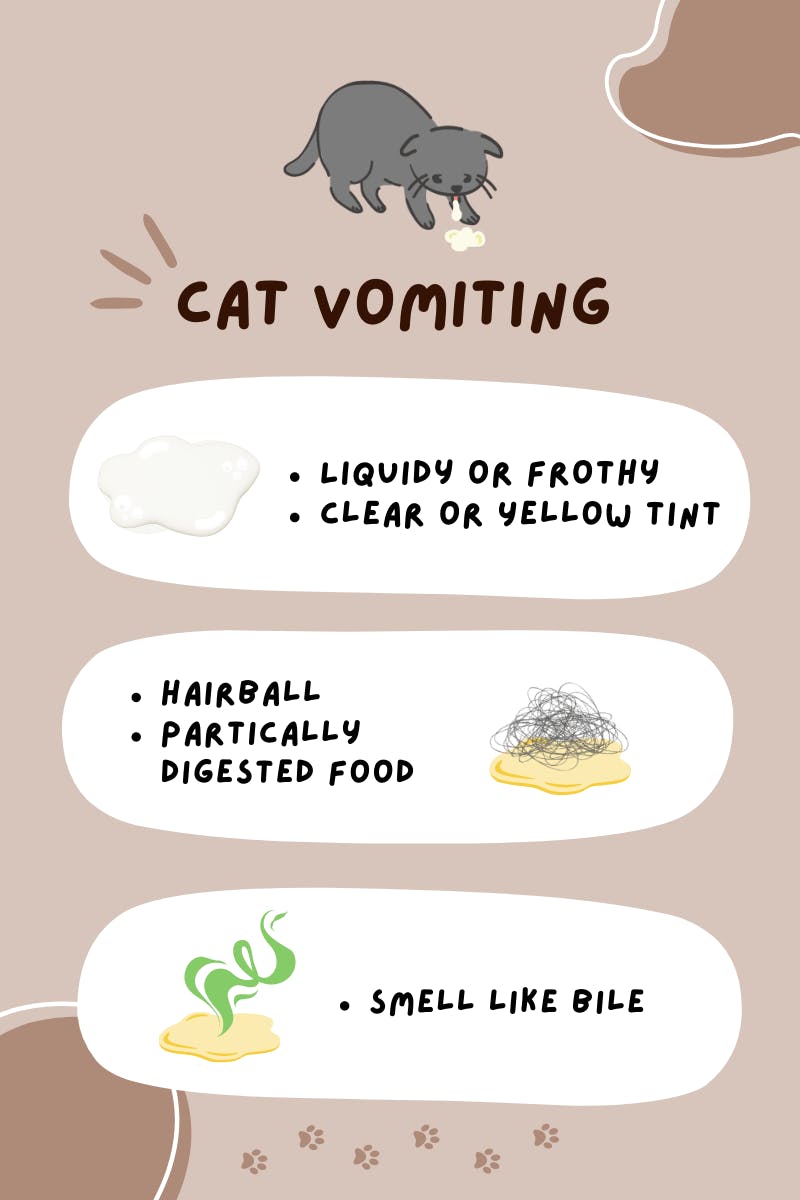
Dog Vomiting Causes
It can be challenging to know why your dog threw up, especially if you weren’t home when it happened. But you can figure it out by looking at the color, texture, and frequency of your dog’s throw up. Here’s how.

Dog Vomit Color
The color of dog vomit can provide valuable insights into potential health issues. Here are some common vomit colors and their possible implications:
- Clear or foamy white vomit: Empty stomach or excess mucus
- Yellow vomit: Presence of bile, indicating possible issues with the liver or gallbladder
- Green vomit: Ingestion of grass or unusual substances, or intestinal problems
- Red or brown vomit: Concerning signs of bleeding, requiring immediate veterinary attention
Dog Vomit Texture
Apart from color, the texture of dog vomit can also provide valuable clues about the underlying cause. Pay attention to the following indicators:
- Liquid vomit: Possible irritation of the digestive system or excessive water consumption
- Chunky or partially digested food: Fast eating or poor digestion
- Foam or froth: Excess stomach acid, often associated with an empty stomach or gastritis
Dog Vomit Frequency
The amount of times your dog throws up can also indicate the gravity of the situation. Consider the following scenarios:
- Isolated incident: Not immediately concerning if your pup appears otherwise healthy. Monitor and consult a vet if it persists or worsens
- Occasional vomiting: If the vomiting is sporadic and your pup is eating and drinking normally, it may not be a severe condition. However, it's wise to consult a vet to rule out underlying conditions
- Persistent or recurrent vomiting: Frequent vomiting accompanied by symptoms like lethargy or loss of appetite requires prompt veterinary attention
What to Do When Your Dog Throws Up
- Comfort and support your pup: Offer fresh water and a quiet resting space. Avoid feeding until the vomiting has stopped for several hours
- Assess the situation: Examine the color and texture to determine whether they need immediate veterinary care
- Monitor your dog: Even if it’s an isolated incident that didn’t call for concern, keep an eye out for your dog. Observe their behavior, appetite, bowel movements, and any other changes or distress. Report these observations to your vet if the situation escalates.
Seek immediate veterinary advice if your dog's vomiting persists or worsens.
Cat Vomiting Causes
Most (if not all) cat pawrents are familiar with the dreaded gagging noise the cat makes before throwing up. Cats often spit up their hairballs, which isn’t a concerning occurrence, but you should still monitor the cat puke. Its color, texture, and frequency will also let you know if you should take any action.

Cat Vomit Color
The color of cat vomit can provide valuable clues about their health. Here are some common cat vomit colors and their possible implications:
- Clear or foamy white vomit: Expulsion of saliva, mucus, or an empty stomach. Usually not concerning
- Yellow or green vomit: The presence of bile. Suggests gastrointestinal issues that should be evaluated by a vet
- Red or brown vomit: Possible blood presence, indicating various conditions. Requires immediate vet attention
Cat Vomit Texture
The texture of cat vomit can provide additional insights into the underlying cause. Here are some examples:
- Liquid vomit: Indicates issues like dietary indiscretion, hairballs, or gastric irritation. Monitor and consult a vet if it persists or is accompanied by concerning symptoms
- Hairball vomit: Happens due to the cat’s self-grooming instinct, especially for long-haired cat breeds
- Partially digested food: Occurs when the cat eats too quickly or has a sensitive stomach. Feed smaller, frequent meals or use slow feeders to help
Cat Vomiting Frequency
Cat vomiting may have more serious underlying conditions if it happens very often, even the more “normal” hairball spitting up occurrence. The frequency of cat vomiting can vary and provide valuable information:
- Isolated incident: Not immediately concerning if infrequent and the cat appears healthy. Monitor and consult a vet if it persists or worsens.
- Occasional vomiting: Not severe if the cat continues to eat, drink, and behave normally. Seek vet advice if it becomes more frequent or is accompanied by concerning symptoms
- Persistent or recurrent vomiting: Requires prompt vet attention, especially if accompanied by lethargy, loss of appetite, weight loss, or diarrhea
What to Do when Your Cat Vomits
- Comfort your cat: Give them a comfortable place to rest, and don’t feed them for a while after the vomiting incident
- Assess the situation: Take a look at the color and texture of the cat puke, and determine whether you need to go to the vet
- Monitor your cat: Observe your cat's behavior, appetite, litter box usage, and overall well-being
Pro Tip: Incorporate regular grooming into your cat’s routine, and consider switching to an anti-hairball cat food formula. This might help minimize the frequency of hairball-induced vomiting.
Written in collaboration with certified veterinarian, Dr. Matt McGlasson.

